Top Rankings
Valley View School District ranks among the top 20% of public school district in Arkansas for:
Category
Attribute
Overall Rank
Highest overall rank (Top 5%)
Math Proficiency
Highest math proficiency (Top 5%)
Reading/Language Arts Proficiency
Highest reading/language arts proficiency (Top 1%)
Science Proficiency
Highest science proficiency (Top 5%)
Graduation Rate
Highest graduation rate (Top 5%)
Community Size
Largest student body (number of students) (Top 1%)
For the 2025 school year, there is 1 public preschool serving 729 students in Valley View School District.
Public Preschools in Valley View School District have a diversity score of 0.32, which is less than the Arkansas public preschool average of 0.65.
Minority enrollment is 18% of the student body (majority Black and Asian), which is less than the Arkansas public preschool average of 47% (majority Black).
Overview
This School District
This State (AR)
# Schools
4 Schools
152 Schools
# Students
2,995 Students
64,218 Students
# Teachers
206 Teachers
3,896 Teachers
Student : Teacher Ratio
15:1
15:1
District Rank
Valley View School District, which is ranked within the top 5% of all 258 school districts in Arkansas (based off of combined math and reading proficiency testing data) for the 2021-2022 school year.
The school district's graduation rate of 96% has increased from 95% over five school years.
Overall District Rank
#3 out of 259 school districts
(Top 5%)
(Top 5%)

Math Test Scores (% Proficient)
61%
38%
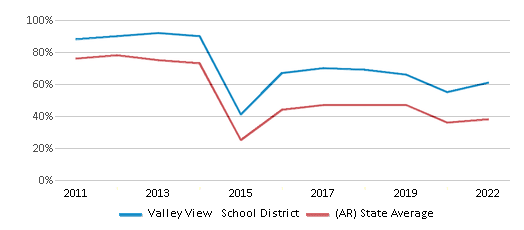
Reading/Language Arts Test Scores (% Proficient)
67%
40%
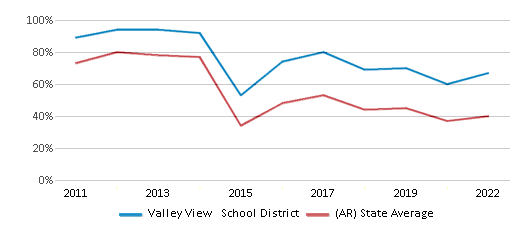
Science Test Scores (% Proficient)
57%
36%
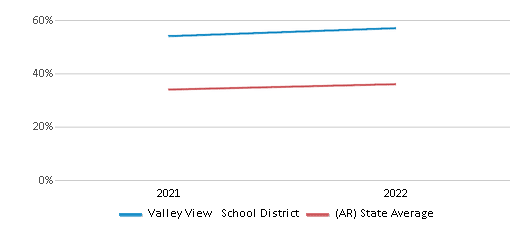
Graduation Rate
96%
88%

Students by Ethnicity:
Diversity Score
0.32
0.65
# American Indian Students
8 Students
304 Students
% American Indian Students
1%
n/a
# Asian Students
126 Students
1,286 Students
% Asian Students
4%
2%
# Hispanic Students
154 Students
8,907 Students
% Hispanic Students
5%
14%
# Black Students
148 Students
15,458 Students
% Black Students
5%
24%
# White Students
2,462 Students
33,786 Students
% White Students
82%
53%
# Hawaiian Students
2 Students
433 Students
% Hawaiian Students
n/a
1%
# Two or more races Students
95 Students
4,044 Students
% of Two or more races Students
3%
6%
Students by Grade:
# Students in PK Grade:
100
10,082
# Students in K Grade:
188
11,994
# Students in 1st Grade:
207
10,563
# Students in 2nd Grade:
234
10,072
# Students in 3rd Grade:
237
7,942
# Students in 4th Grade:
226
6,793
# Students in 5th Grade:
209
5,152
# Students in 6th Grade:
232
1,597
# Students in 7th Grade:
239
22
# Students in 8th Grade:
226
-
# Students in 9th Grade:
224
-
# Students in 10th Grade:
251
-
# Students in 11th Grade:
214
-
# Students in 12th Grade:
208
-
# Ungraded Students:
-
1
District Revenue and Spending
The revenue/student of $11,195 in this school district is less than the state median of $13,132. The school district revenue/student has stayed relatively flat over four school years.
The school district's spending/student of $9,656 is less than the state median of $13,043. The school district spending/student has stayed relatively flat over four school years.
Total Revenue
$34 MM
$6,371 MM
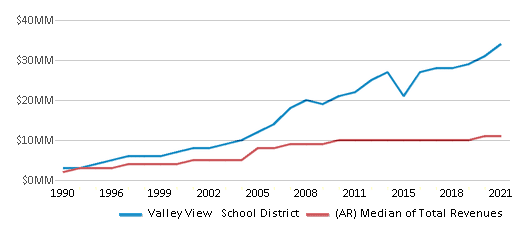
Spending
$29 MM
$6,327 MM

Revenue / Student
$11,195
$13,132
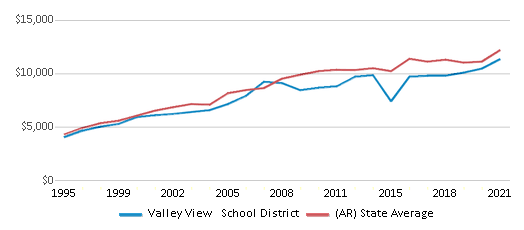
Spending / Student
$9,656
$13,043
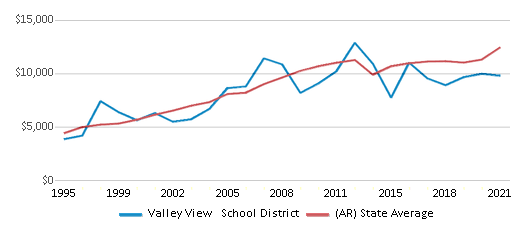
Best Valley View School District Public Preschools (2025)
School
(Math and Reading Proficiency)
(Math and Reading Proficiency)
Location
Grades
Students
Rank: #11.
Valley View Elementary School
(Math: 94% | Reading: 94% )
Rank:
Rank:
10/
Top 5%10
2119 Valley View Dr
Jonesboro, AR 72404
(870) 935-1910
Jonesboro, AR 72404
(870) 935-1910
Grades: PK-2
| 729 students
Recent Articles

Year-Round Or Traditional Schedule?
Which is more appropriate for your child? A year-round attendance schedule or traditional schedule? We look at the pros and cons.

Why You Should Encourage Your Child to Join a Sports Team
Participating in team sports has a great many benefits for children, there is no doubt. In this article you will learn what those benefits are.

White Students are Now the Minority in U.S. Public Schools
Increasing birth rates among immigrant families from Asia and Central and South America, combined with lower birth rates among white families, means that for the first time in history, public school students in the United States are majority-minority. This shift in demographics poses difficulties for schools as they work to accommodate children of varying language abilities and socio-economic backgrounds.





